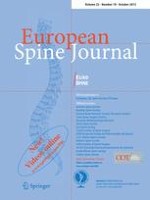01-10-2013 | Review
Anterior versus posterior approach for treatment of thoracolumbar burst fractures: a meta-analysis
Published in: European Spine Journal | Issue 10/2013
Login to get accessAbstract
Purpose
To critically review and summarize the literature comparing the results of surgery via an anterior approach and that via a posterior approach for the treatment of thoracolumbar burst fractures to identify the better approach.
Methods
In this meta-analysis, we conducted electronic searches of MEDLINE, EMBASE, the Cochrane Central Register of Controlled Trials and other databases using the search terms “thoracolumbar fractures”, “anterior”, “posterior”, “controlled clinical trials”. Relevant journals or conference proceedings were also searched manually. Data extraction and quality assessment were in accordance with Cochrane Collaboration guidelines. The analysis was performed on individual patient data from all the trials that met the selection criteria. Sensitivity analysis was performed when there was significant heterogeneity. Results were expressed as risk difference for dichotomous outcomes and mean difference for continuous outcomes with 95 % confidence interval.
Results
Four randomized clinical trials and three controlled clinical trials comparing the results of the anterior versus posterior approach in the treatment of thoracolumbar burst fractures were retrieved; these studies included 179 and 152 patients in the anterior and posterior approach groups, respectively. There were no differences in terms of neurological recovery, return to work, complications and Cobb angle between the two groups. The anterior approach was associated with longer operative time, greater blood loss and higher cost than the posterior approach.
Conclusions
The posterior approach may be more effective than the anterior approach. However, more high-quality, randomized controlled trials are required to compare these approaches and guide clinical decision-making.
Level of Evidence Level II, therapeutic study. See the Guidelines for Authors for a complete description of level of evidence.





